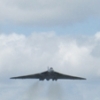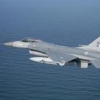Search the Community
Showing results for tags 'RAF'.
-
Hi Everyone, I have been meaning to start on this project since I got back from my holiday in August, but just haven't felt up to it, my mojo has been a complete non-starter for months now. Back story posted here : http://www.britmodeller.com/forums/index.php?/topic/234988171-revell-1144-b-52h-stratofortress-whif-poll-added/?p=2102381 Now I have 2 options to consider for this build : Give the plane 4 CF-6 engines from a Revell 747 which I was sent or build it as standard with 8 engines. The reason I say this is because the 4 engines are a lot larger than the standard engines and I am worried that due to the low ground clearance of this model the CF-6 engines might not clear the ground when attached to the wings. I am going to build the fuselage up with landing gear and temporarily fit the wings in place so that I can test fit an engine onto the wing and check the clearance before I glue everything together just in case i need to use the standard engines. To make a permanent fit of the 4 engines without changing engine pylons around I will have to cut the pylons down so that the length of them don't interfere with where the flaps are on the wings. Anyway here are photo options showing the different engine configurations. 8 engines 4 engines Anyway as soon as I have some photos showing progress (whenever that will be), I will get them posted on here. Wish me luck. Cheers, Rick
-
Hands up if you watched Only Fools and Horses, looked at the Trottermobile and thought "i want one". Well Mr Scammell thought the same...he was just a little early that's all... The Scammell Scarab is a British 3-wheeled tractor unit produced by the truck manufacturer Scammell between 1948 and 1967. Its name is commonly believed to be derived from the rounded bonnet that resembled the elytra (wing covers) of a Scarab beetle, but the name really comes from a more conventional source, Scammell's idea of the combination of an Arab horse...and the word Scammell. Sca-rab = Scarab...It was extremely popular with British Railways and other companies which made deliveries within built-up areas. The Ministry of Defence also used the Scarab and trailers for predominantly internal transport on large military bases... And it's the last sentence that allows me to contemplate a less than commonly seen Service Garb for an already less than commonly seen kit. :) Roll on the Dapol (ex-Airfix) HO/OO Scammell Scarab...
-
With the decision to phase out the Sea King HAR.3 during 2017, a replacement was needed. Rather than following a privatised model, the MoD opted instead to look at other potential helicopter resources. There were two obvious candidates to replace the HAR.3 - the Super Puma and the Merlin. Following trials with both aircraft, the Merlin was selected. Following the release of the RAF's Merlin HC3s to the Royal Navy's Commando Helicopter Force, and the upgrade of most Merlin HM1s to HM2 standard, the Navy was left with 10 surplus HM1 airframes. These ten aircraft were made available for refit to Search and Rescue specifications. The newly-designated HAR.5 would retain the HM1's Searchwater radar, as well as being fitted with a slimmed down version of the HM2's advanced avionics suite. Several changes were made to the internal layout. Seating was rearranged to accommodate the extensive SAR equipment. Additional bulbous observation ports similar to those found on the Sea King were added close to the centre of the fuselage to aid in visual searches. Obligatory box shot: The sprues, showing the painting work completed last night: A test fit to check how observable the interior is and decide on a construction order. Posts elsewhere on the forum have suggested completing one side at a time and then joining the two. However, the fit seems clean enough so I'll probably just follow the order in the instructions:
-
For my Scarab... 50s/60s, and often later until the military was sold off to the civi contractors, RAF or RN vehicles were generally blue (obviously save for specials and frontline eg RAFG). Best Revell, Humbrol or Tamiya (possibly Vallejo if stocked)? Would love 100% accuracy but won't be mixing %s so will take a 'very close'. ... VMT. D.
-
At long last I have a 'new' desk which although smaller and lacking drawers/cupboards will at least allow a restart after a too-long break. And what dropped through my letterbox this morning but another early suprise...(although mine is rather more crumpled in appearance) The (not so) mighty Mechanical Horse aka Scammell Scarab which using the kit options would build up to this: I see there is a walkaround (yay!) but only one build thread (aww) so it will fit in nicely as being different to the normal 99.9% of kits seen. Now I just need to get bits and pieces sorted in to place before deciding on RAF, RN or civilian scheme (and another excuse to get to Antics searching the paint stands...whilst ignoring the 'wall of plastic' of course:)) One question/request... Google (and Bing) bring up a few pix of models or museum vehicles in military dress but nothing of real vehicles in action. Whilst I'm still umming and erring on my Dinah build I thought it might look good sat next a 50s or 60s Hunter or Gannet or...
-
Hi guys, In 1/32nd some figures can be found for Spitfires and the like but they are labelled as "Mid-Late War". I would be interesting in fitting a pilot in Revell's Spitfire Mk. II, built as an early 1940 Mk. I. So what are the differences in flying kit? Any pointers to books or websites dealing with this are very welcome too! Cheers, Erik.
-
I'm rather pleased with this one: Diamond T 968/ William Bros 'SnoFlyr' rotary snowplough. Used by the RAF from about 1943, originally developed for the US Navy, these were versions of a civilian highway model, themselves versions of a railway design. The chassis was cut a little shorter at the front, and obviously the winch & front bumper assembly left off. The support frame assembly was scratch-built. The Rotary Snowplough was scratch-built using plasticard and microstrip and rod. There are some pictures on the web of this unit attached to a FWD HAR-1, and I used these pics and a copy of January 1946 edition of Popular Mechanics (bought on the web) to produce a scale(-ish) drawing. The engine cover on the rear was again scratch-built using plasticard. Most of the RAF examples had a Coventry Climax R6 engine to power the snowplough, through a transfer case, and provide hydraulic power for the controls and lifting gear. The chap was from one of the many Airfix RAF vehicle sets. I reshaped head and hands to represent a woolly hat and gloves, and added a tissue paper(+PVA glue) leather jerkin (the famous 'Don R'), on which I tried to represent the wind. The colour scheme is basically US Olive Drab, mixed to Mike Starmer's spec. At this stage of the war the RAF didn't re-paint vehicles until they needed it- so most RAF vehicles would've been in the colours they were supplied in. I sprayed Humbrol Glosscote over it, applied the decals and a light blackwash, and finished with a coating of Humbrol Mattcote. I did a quick dusting of artists pastels to get the snow effect. The base was a spare piece of cotton glued onto the base and covered in a filler called 'OneTime' this is a lightweight decorators filler (uses micro balloons) designed to fill deep holes and dry quickly. AS you can see it dries really white, and rock hard.
- 2 replies
-
- 6
-

-
- snowplough
- snowclearing
-
(and 8 more)
Tagged with:
-
Hi I was able to go up to Biggin Hill last weekend to watch the two Typhoons depart. The 29 sq red tail and the camouflage scheme were there, I think they'd been displaying at Folkestone on the Saturday. A few photos are below:
-
Hi everyone Hot on the heals of my Spitfire and Albion is my next build the Airfix Hurricane. Again this will be incorporated into a diorama of a BofB Hurricane under going a some maintenance. I've opened the maintenance hatch on the starboard side of the cockpit, the access panel to the Radio Type 1133 on the port side of the air frame, I'll also open the gun bays and lastly I want to show this Hurricane undergoing a wheel change so I'll scratch build a Dunlop 2.5 tonne jack. Well that's, that! Cheers Iain
-
Hi everyone My Airfix Albion 3 point refueller. Thanks Iain
- 10 replies
-
- 16
-

-
Hi everyone Well another day and another build. My 1/32 has been put to one side for a little while for no other reason than I received the Airfix Albion 3 point refueller and Bedford MWD plus the WW2 RAF ground crew set. For a long time I've wanted to create a typical scene that happened on any given day at every RAF fighter station during the opening days of WW2. I wont be using all of the above items but I intend to create a diorama for the Spitfire and another for the Hurricane. I've also bought decals from Xtradecal (X48086 RAF Battle of Britain 50th anniversary Spitfires and Hurricanes) and the Spitfire will be finished as R6800 for no other reason that I like the Sky Blue undersides and the Roundel red spinner. I started the Airfix kit about 2 -3 months ago but it stalled because in my example part C51 was in three pieces but after an email the good folks at Airfix sent a replacement. So here is where I'm at the cockpit is complete and the fuselage has been glued together.. I hope to crack on with this over the next few weeks as I'm iching to start on the ground equipment, which by the way I have no knowledge on! Cheers Iain
-
Good evening all. I recently purchased the whole of BW Models range of RAF Fire Service vehicle moulds and masters upon Barry's retirement. Being an ex RAF Fire Fighter and avid modeller I had to do it. I am now in full production so if anyone is interested in anything give me a shout . Look me up if you like at Mid Devon Models. I am also in the process of making masters for most of my range in 1/48 scale too. Yes, its all white metal and I love working in it, not literaly as I would melt away lol. I will post some of my builds up as soon as I get time. Many thanks and take care all Paul E Flamus Atque Ruinus Salus
-
Finally I managed to finish a model - also finished it in under a month!!! Revell kit, out of the box. No added bits, just a straight forward build. I stumbled across a framed photo/painting - call it what you prefer, and though that would go well in my room. One day, I stumbled over this kit, and lobbed it in my room, along with the picture. And it was here, that I noticed that the painting I had bought, was in fact the boxart of the kit I had just bought! So it was a pretty easy decision, to choose what plane it should be built as. So, here goes: Revell 1/48 Spitfire Mk IXc, No. 43 Squadron RAF, Klagenfurt, Austria June 1945 Robin
-
Hello and thanks for your interest in this topic. This is my 1/72 Revell Hawker Hurricane IIc, a kit that I bought at a swap-meet of IMPS Austria a couple of years ago. Apart from the plastic sprues, it also contained a small etch fret by Eduard for the interior details, paint masks and a vacu canopy from Squadron. After many years of languishing in my stash (with the box already bleached and crumpled) I came across a Xtradecal Sheet "D-Day Anniversary Pt.1 (X72194)" that contains markings for a Hurricane with D-Day stripes - that's what I had been waiting for. Of course, this build is horribly late for that mentioned anniversary. By summer 1944, the Hurricane was already outdated and withdrawn from frontline service. However, a number of aircraft, still retaining their armament, served with 1697 Air Letter Despatch Service. They carried mail in the underwing pods from forward airfields in France to England. Some info about 1697 flight can be found here: thttp://www.bbc.co.uk/history/ww2peop...a2943001.shtml This Revell kit dates back to the 1990s and is among the best-fitting model kits I've ever laid my hands on. You won't need any filler! The Eduard masks had not aged well, they had lost all their adhesive force and would literally 'fly away' when you spray them with the airbrush. The Squadron vacu was obviously not designed for this particular kit, being too wide. I did use Eduard's photo etch pieces for the cockpit interior, though. A new vacu from Rob Taurus was purchased. The model was sprayed with acrylic colors from Gunze/Mr.Hobby. D-Day stripes are all airbrushed, too. Photographed by Mr. Wolfgang Rabel of IGM Cars & Bikes. Thank you.
- 22 replies
-
- 18
-

-
Afternoon all, Sorry to trouble you with another quwey regarding the Blue Steel missile When viewing photographs of the Blue Steel missile being loaded onto the Vulcan and Victor, the upper tail surface appears to be missing from a few of those. So my questions are as follows: Was this fin removeable? When carried in the recessed bomb bay of the Vulcan and Victor, was the tail surface kept vertical and fitted into a recess or was it folded down? Thanks, Sam
- 8 replies
-
- blue steel
- missile
- (and 8 more)
-
Good morning all! When going to my local model shop the other day to add to my newly acquired taste (not literally-tasting paint wouldn't be very good for your health ) of Vallejo paints, I stumbled across this kit. In regards to the paints it is a major turning point for me, I have been used to the Humbrol Enamel paints since I first began modelling about 10 years ago and since my "revival" in the hobby about 3 years ago and I have found that the Vallejo paints are less resilient but provide a better coating I believe in terms of the aesthetic appearance. In addition to this, they can be dilluted with water (saving a lot of money on thinners and being better for my general health too). Anyway the kit, it was about £5 I seem to recall which is not bad at all for a newly tooled kit and dare I say, what a pleasure it was to build too! I did make a bit of a mess of it in places and I suppose it was more of an experiment piece to test different techniques and different finishes (my first time using the vallejo silver and the fluorescent red), but nevertheless I believe this is not too bad a model-if I do say so myself. So, without further rambling, here we are: Thanks for looking, Sam
-
EDIT: this is the second of three entries I made in the Phantom STGB. I wasn't able to finish any in time but I'll finish the builds as regular WIPs. So, the threads have been moved here very promptly by Mish, Shar2 and Greg B. Thanks for that -------------------- Hello dear Fellow Modellers, This is my second entry in this GB (my first entry is here). This time I'll be building Fujimi's RAF Phantom in the colours of the Alcock & Brown commemorative flight. The boxing and contents are the following: IMAG1741 IMAG1742 IMAG1743 IMAG1744 This kit is not exactly equal to the Royal Navy (RN) one I'm also building. It's a later version of the mouldings, with corrections to some inaccuracies of the early moulds, and some added detail (e.g.: positionable flaps and air-brakes). It also comes with a PE fret, rubber tires and white metal parts for the landing gear and ejection seats: IMAG1745 I'll use the PE fret but I'm not convinced by the rubber and metal parts. I'll stick to the plastic parts for these. Initially, I intended to use this kit to build a combat camouflaged aircraft, instead of the commemorative painting scheme. I even bought decals for that purpose. Unfortunately, I chose decals for recce squadrons and the kit doesn't come with recce pods or ground attack rockets, which I believe were used by one of those squadrons when deployed in Cyprus after the Turkish invasion (the 41st Sqn). The weapons available are for the air interception configuration (air-to-air missiles and external fuel tanks). Here are the original kit decals, on the left, and the additional decals I bought but won't be using in this build: IMAG1746 I'll build this kit OOB. As with the RN version, my objective is to improve my building efficiency. Since the two kits are very similar, I hope to be able to build them in parallel and keep a high rate of progress. This kit has the added objective of being my first application of PE parts. So, moving on to the building process. I started the kit last Sunday's night, one day later than the RN one. I started by cutting the main parts off the sprues, like shown here: IMAG1927 Then, I dry-fit the parts in order to identify areas of problematic fit: IMAG1928 IMAG1929 Everything fits very well and the fuselage halves are not warped like in the RN kit. Therefore, the problem found at the tail in the RN kit is not apparent here: IMAG1932 Anyway, its advisable to also insert a sprue rod spacer in the fuselage, in order to eliminate the wing root gaps: IMAG1930 IMAG1931 After this, I cut the small parts off the sprues and glued them to the tips of toothpicks to facilitate painting. Here are the instrument panels and other cockpit parts: IMAG1934 and here are all the small parts I've already prepared for painting: IMAG1938 I had to use putty to make some ejector and sink marks disappear. The putty was thinned with Gunze's enamel thinner and applied in thin layers with a small paintbrush, resulting in the following picture (inner surfaces of the air intakes and some parts from the cockpit's walls): IMAG1937 After 24 hours of drying time, I sanded the excess putty with 400-grit wet-and-dry: IMAG1940 The next step is applying grey primer to the small parts and checking that the marks are now invisible. As you can see, this and the RN kit threads are almost equal to each other. However, since the weapons loading, paint schemes and decals are completely different, I opted for two independent threads. Thanks for looking. Jaime
-
Good morning all! I am just wondering whether anyone knows how the Blue Steel missile was attached to the V-bombers, specifically the Avro Vulcan. I have seen a Pathe film of Blue Steel showing the ground crew "winding" the missile up into the bomb bay of the Valiant, I am not sure whether this would be the same with the Vulcan? On a related note, having been to Cosford and seen their Blue Steel far too many times for it to be deemed normal behaviour (only kidding, Cosford is a wonderful place) I noticed that on the horizontal "wing/winglets" at the rear of the missile, there are two cylinder shaped attachments which are attached just above these wings. I don't think that the Cosford Blue Steel was a test vehicle so I don't think it could be carrying any sort of flare to mark its location (if the test vehicles ever used such a setup), however I suspect that it has something to do with its suspension from the V-bombers??? I also tried obtaining an estimate for how much it would cost to copy some Blue Steel technical drawings from the national archives and the answer came back- £350!!! So a dead end there... Anyway, thanks for reading my verbal ramblings, Sam
- 6 replies
-
- blue steel
- vulcan
- (and 8 more)
-
Dear fellow modellers, I've recently signed up, after several months reading and learning here at Britmodeller. My introduction post can be found here. This is my first RFI post. It's the Airfix Spitfire Mk I 1/72. It was my first model after returning to the hobby and served as a "guinea pig" for my learning of all essential modelling techniques. I did it from 1 July to 9 October 2014. In parallel, I started working on a Revell Hurricane Mk IIc 1/72 (which I concluded shortly after - I'll also post it in the RFI area) and also on an Airfix Grumman Duck (which I only managed to finish by the end of January 2015 - I'll also post it as RFI). Here are the pictures: Since this was my first attempt, it isn't perfect. In fact, I did a lot of mistakes and had to paint most of the aircraft two or three times. In the end, the canopy didn't fit and I had to file it. Some notes on the techniques used: mostly OOB, only added seat belts made fromTamiya tape and antenna wire made from elastic fishing line (painted with a black marker) drilled holes on the exhaust tubes using a 0.3 mm manual mini-drill primed with Tamiya XF-19 sky gray pre-shaded with Tamyia flat black acrylic XF-1 masking for the upper camouflage used blu-tack "worms" plus a combination of Tamyia tape and kitchen cling film (I try to minimize using tape to avoid paint peeling) Mostly painted with Gunze Aquous paints. Flat black was Tamyia acrylic XF-1. Microscale Micro Gloss applied before and after decaling. Used Microscale Micro Set and Micro Sol for decaling. The decals where a bit thick and I ripped some when trying to make them conform to the deep panel lines. Brown wash from Vallejo acrylic line of washes. It was a sludge wash followed by wiping with a moistened swab after 15 min drying time. Chipping of worn areas simulated by dry brushing with silver paint. Not the best option because there wasn't much surface relief for the paint to adhere to. But, on the other hand, the effect is very subtle. Microscale Micro Flat applied after wash and chipping Vallejo pigments used for mud and dirty marks on the undersurfaces, tail wheel and in the main gear legs, wheels, doors and wells. Mixed with flat varnish, resulting in a very mud-like appearance. Vallejo pigments used for exhaust stains and machine gun stains. For the first application I mixed the pigments with flat varnish and didn't work well (seemed like black paint). I had to remove this mess and reapply the dry pigments with a paintbrush, rubbing the pigments on the fuselage and wings. This resulted much better. The pigments were fixed in place with Micro Set. Please let me know what you think. As a first attempt I was pleased enough with the results. The main purpose was learning modeling techniques and this I did achieve. The following models where more perfect than this one, I believe. Thanks for looking. Jaime
-
Hello all, This is my rendering of Spitfire Mk XIV of the 91 Sq, RAF, West Malling (codes DL-F, NH698), flown by Flight Officer Kenneth Roy Collier of the RAAF, as it was on D-Day, 6 June 1944, and the following days. Collier became famous when, on 23 June 1944, tipped a V1 flying bomb with the tip of his Spit's wing, making the bomb lose directional control and crash on the ground, without hitting its target. This technique was then adopted by other pilots chasing flying bombs. On 5 December 1944, Collier was shot down and killed in a dogfight with FW190s and Bf 109s over Germany. He rests in the Rheinburg Commonwealth War Cemetery, in Nordrhein-Westfal, Germany. This is a small homage to a brave young man. This model was built OOB, with the exception of the seat belts (made out of Tamiya tape and aluminium wire) and the bar on the cockpit access door (made out of stretched sprue). I also rescibed some panel lines missing on the aft of the lower wing part. The D-Day stripes were painted. The WIP thread is here. Here are the final photos. General views: Detail views: Port wing's upper surface: Starboard wing's upper surface: Starboard wing's under surface: Port wing's under surface: Belly and wheel wells: Landing gear: Cockpit: I hope you liked it. All comments are most welcome. Thanks for looking. Jaime
- 29 replies
-
- 25
-

-
Bournemouth Air Festival is an annual event in the south of england as many of you may know. It has become increasingly popular over the past five years especially with 'holiday' makers especially when the sun is out. I thought i'd share with you a few snapshots of the two days I spent there: (images are saved on my deviantart.com account) Chinook HC.2 ZH777 (flew on this girl on my first cadet flight) Douglas Dakota of the RAF on her turn away from the beach. Westland Merlin of the RN, showing off the radars on her belly Westland Merlin slinging a precious load, the winchman was a bit cheeky on this occasion. Only eight appeared last year after one of the members welcomed a new baby girl into the world. Again, a broken diamond formation as only eight managed to turn up to the festival. A famous duo of the Battle of Britian memorial flight Victorious V-Bomber, Vulcan XH558 climbs out on her 'howling' engines. I hope you like them, any feedback, as long as it is not abusive (i hope) is welcome. enjoy
-
Dear All, This is also a model I'm nearly finishing, but still with some work to do. I started it back in December 2014. The objective was to consolidate my skills with two-colour upper camouflage aircraft of the WWII. I was also a bit worn out with seam treatment on the Grumman Duck I was building at the time (see RFI post here), so I guess an Academy kit with good fit would be a good change of affairs. Here is the box and contents. This is the Academy double kit box commemorating the 70th anniversary of D-Day, containing the Spitfire Mk XIVc and the Typhoon Ib. For the Spit we have two grey sprues and a clear sprue. The decals are not shown but allow the choice of two different aircraft, either with or without D-Day stripes (which are provided as decals). IMAG1146 The kit is highly detailed and has excellent fit, as can be seen from the following photos of dry-fit tests. First, a dry fit of the cockpit parts and fuselage side, showing the excellent interior detail: IMAG1153 And now, a dry fit of the main parts: IMAG1154 Here it is, side by side with my completed Spit Mk I (RFI here): IMAG1155 I started by giving the canopy parts a bath in Alclad Aqua Gloss, to improve transparency, and, after drying overnight, masked them with Tamiya tape: IMAG1216 IMAG1217 IMAG1218 IMAG1219 IMAG1220 IMAG1221 I also drilled out the exhausts, to give them a more reallistic look. I used a 0.3 mm mini-drill: IMAG1148 Then, I moved on to the cockpit. The instrument panel was painted: top flat black, bottom interior green (Gunze H312 Green). The dials were dry brushed in flat white, yellow and red (according to pictures of the real thing). Dry-brush with silver provided a worn look. Micro flat was applied to give a flat look. To finish with, a drop of Aqua Gloss was applied in the centres of the dials, to simulate the glass covers: IMAG1286 A similar treatment, including a brown wash with Vallejo acrylic washes, was given to the cockpit sides: IMAG1287 IMAG1283 Seat belts were made out of Tamiya tape and aluminium wire (maybe too thick a wire...): IMAG1281 And then applied to the seat: IMAG1288 The cockpit parts were glued together: IMAG1296 IMAG1297 And then, glued to the fuselage side: IMAG1301 That's all for now. Hope you like it. Cheers Jaime
-
Hi everyone! I have decided to try my luck in building my first WWII aircraft! The unlucky kit chosen for this ordeal will be the Revell 1/48 Mosquito, I will try some new things like camouflage painting for example. It´s one more step for me in this hobby! So, I will leave the first pictures of this build! Thanks for looking, iuri
-
Well after just over 2 years this shelf queen has been finished. It was an original tool 1/72 Airfix kit. I replaced the props with those from an Italeri kit and the decals were from Xtradecal. The refueling probe was also Italeri. I had lots of paint issues with it lifting when masking was removed. Took ages to rectify it. Still signs of where it was patched but I am happy it is now on the display shelf. Also had issues after lifting the masking after almost 2 years on the model. Fixed it up best I could. I did not realise how much paint was around the cockpit clear parts
- 13 replies
-
- 18
-

-
Hi, everybody. After several months of lurking around here and finding myself in awe of the quality of the builds on here, I finally decided I'd sign up and post my own efforts. I picked up Tamiya's 1:48 Lancaster on eBay, the other day. I've always had a thing for Lancasters, and the kit was relatively cheap. I couldn't resist. I'm afraid though, it seems I've bitten off a bit more than I can chew - I wouldn't consider myself to be the most accomplished modeller, and the equipment I've got to work with is...well, rudimentary at best. I really want to do this kit justice, so I'd love some constructive criticism, advice, tips, tricks or anything else you might be willing to share Anyway, here's the early going (apologies for the iPhone camera quality) Got some of that Eduard PE too, to spruce up the interior a bit. Heard a lot about it, but never used it before. Utterly fantastic, and quite cheap too. Reckon I'll get some more for the bomb bay - although the kit bay comes with lots of studs on it that need to be removed. Anyone have any tricks for removing them, or am I in for a lot of sanding?











